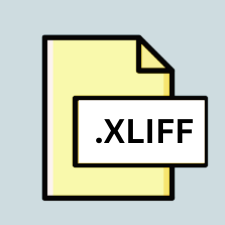.XLIFF File Extension

XLIFF Localization File
| Developer | OASIS |
| Popularity | |
| Category | Data Files |
| Format | .XLIFF |
| Cross Platform | Update Soon |
What is an XLIFF file?
.XLIFF (XML Localization Interchange File Format) is a standardized XML-based file format used in the localization industry for exchanging localization data between different tools and systems. It serves as an intermediary format for translating software and documents.
More Information.
.XLIFF was first introduced by the Localization Industry Standards Association (LISA) in 2002 to address the limitations of proprietary localization formats. Its primary purpose was to enable interoperability between different localization tools and systems, allowing translators to work more efficiently.
Origin Of This File.
.XLIFF files originated from the need for a standardized format that could streamline the localization process by separating the content from its presentation and facilitating the translation workflow.
File Structure Technical Specification.
.XLIFF files are structured as XML documents and consist of various elements such as <file>, <unit>, <segment>, and <target>. These elements contain metadata, source content, and translated content, along with other information necessary for the localization process. The technical specification for .XLIFF files is maintained by the OASIS standards organization.
How to Convert the File?
Windows: To convert .XLIFF files on Windows, you can use various localization tools like SDL Trados Studio, memoQ, or OmegaT. These tools typically support importing .XLIFF files and offer options to export them into different formats such as .PO or .RESX.
Linux: On Linux systems, you can convert .XLIFF files using command-line tools like msgcat or poedit. These tools allow you to manipulate and convert localization files, including .XLIFF, into formats like .PO for further processing.
Mac: For Mac users, you can utilize tools like Lokalize or OmegaT, which are compatible with macOS. These tools support .XLIFF files and provide options to convert them into other formats such as .PO or .RESX.
Android: To convert .XLIFF files on Android devices, you can use text editor apps available on the Google Play Store, such as Turbo Editor or QuickEdit. These apps allow you to open .XLIFF files and save them in different formats if they provide such functionality.
iOS: On iOS devices, you can use text editor apps from the App Store like Textastic or Buffer Editor. These apps support opening .XLIFF files, and some may offer options to convert them into other formats if they support such features.
Others: For other platforms, you can explore text editors or specialized localization tools compatible with the respective operating systems. Ensure that the chosen tool supports .XLIFF files and provides options for conversion into desired formats like .PO or .RESX. If there are no native tools available, you may need to rely on online converters or cross-platform localization software.
Advantages And Disadvantages.
Advantages:
- Standardization: .XLIFF ensures compatibility and interoperability between different localization tools and systems.
- Separation of Concerns: It separates content from presentation, making it easier to manage translations without altering the original files.
- Efficiency: .XLIFF streamlines the translation workflow by providing a structured format for exchanging localization data.
Disadvantages:
- Complexity: Understanding and working with .XLIFF files may require technical expertise in XML and localization processes.
- Tool Dependency: While .XLIFF promotes interoperability, some tools may have limitations or proprietary extensions that could affect compatibility.
How to Open XLIFF?
Open In Windows
.XLIFF files can be opened on Windows using various text editors such as Notepad++ or specialized localization tools like SDL Trados Studio.
Open In Linux
On Linux systems, .XLIFF files can be opened using text editors like Vim or specialized localization tools compatible with the Linux environment.
Open In MAC
.XLIFF files can be opened on Mac using text editors like TextEdit or specialized localization tools designed for macOS.
Open In Android
.XLIFF files can be opened on Android devices using text editor apps available on the Google Play Store.
Open In IOS
On iOS devices, .XLIFF files can be opened using text editor apps from the App Store.
Open in Others
.XLIFF files can be opened on other platforms using compatible text editors or specialized localization software depending on the operating system’s support for XML files.













